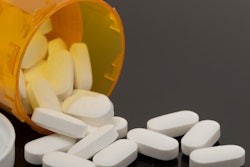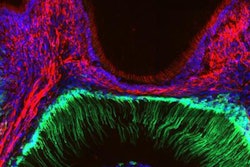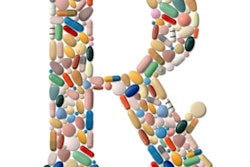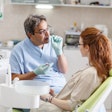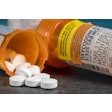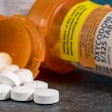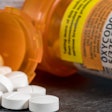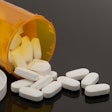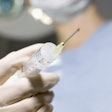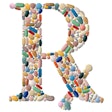
Dentists wrote about 2.7 million opioid prescriptions to patients during a five-year period, according to a study published on February 23 in the Journal of the American Dental Association. About 95% of these prescriptions were written for five dental procedures.
Approximately two-thirds of opioid prescriptions were written for patients who underwent tooth extractions, according to the authors. Implant placement, root canals, alveoloplasty, and addressing a problem from a limited exam rounded out the top five opioid-generating procedures.
"Eliminating routine opioid prescribing for tooth extraction could reduce dental opioid exposure substantially," wrote the group, led by Dr. Kao-Ping Chua, PhD, an assistant professor in the pediatrics department at the University of Michigan.
Dentists are some of the most common prescribers of opioids, which adds to the prescription drug epidemic in the U.S., the authors noted. However, it is unknown what types of dental procedures result in the most opioid prescriptions, and only a few studies in the U.S. have touched on prescribing patterns.
The authors analyzed insurance claims data from 2013 to 2018 using the IBM MarketScan dental, commercial, and Medicaid multistate databases; the dental database includes claims for up to 1.5 million patients each year. Millions of patients younger than age 65 underwent about 120 types of dental procedures in those years. Patients treated with one or more opioid prescriptions dispensed within three days of a procedure were included in the analysis.
The authors converted the opioid prescriptions to daily morphine milligram equivalents (MMEs) and included prescriptions of 50 MMEs or greater in the analysis. This amount corresponds with the U.S. Centers for Disease Control and Prevention's opioid prescribing guidelines of 50 mg of hydrocodone per day as a dose associated with increased risk of overdose.
Of the approximately 9.5 million procedures included in the sample, about 2.7 million were linked with initial prescriptions. Approximately 95% of initial opioid prescriptions were written for five dental procedures, the researchers found.
Tooth extractions accounted for nearly two-thirds (65%) of all initial opioid prescriptions. Performing a limited exam for a problem captured another 17% of initial prescriptions, followed by endodontic therapy with 8.4% of prescriptions.
Alveoloplasty (2.9%) and surgical implants (1.5%) rounded out the top five opioid-generating procedures. All other types of procedures combined accounted for fewer than 5% of all initial opioid prescriptions.

Better understanding of prescribing practices can help improve dental opioid management programs, the authors noted. Because opioid prescribing is concentrated among a few dental procedures, management initiatives should be developed with a targeted procedure-specific approach.
"Given the particularly outsized role of tooth extractions in dental opioid prescribing, eliminating routine prescribing for this procedure alone could substantially reduce overall dental opioid exposure," they wrote.
Though the study sheds light on prescribing practices among dentists, clinicians should consider a few things when synthesizing the results, the group cautioned.
For instance, claims databases only collect opioid prescriptions that are dispensed. The rates of opioid prescribing may be underestimated because the number of dental procedures for which opioids are prescribed is greater than the proportion resulting in dispensed opioid prescriptions.
Additionally, there may be data limitations. Tooth extractions could not be differentiated between surgical and nonsurgical extractions, the authors added.





